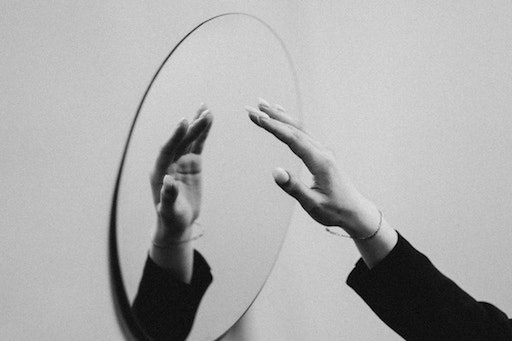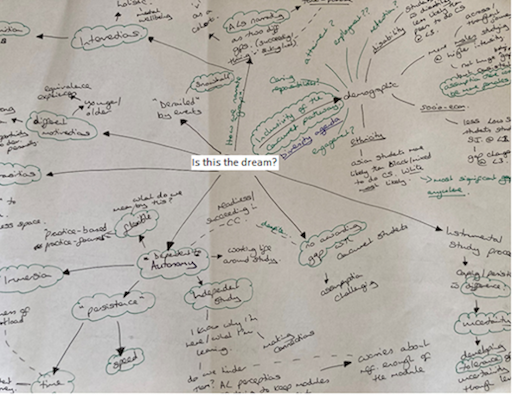2.1 Evaluation as dream-catching
Evaluation, as a process of reflection, is often considered to be a finishing action, something that happens at the end, in order to complete the inquiry process. Evaluation is often considered as a review, from beyond the project – a thinking and seeing backwards across what has happened.
However, in an appreciative approach, where we have continually emphasised both the role of the body and feelings in understanding what is occurring, and the role of improvised, responsive action, which may not have been considered in depth before it happened, there is a much stronger focus on capturing what is experienced and felt during or immediately after action.
By seeing evaluation as always alongside action, where we are constantly looking to appreciate what is happening and finding ever more practices to explore and build from, final evaluation is informed by deeply experiential and embodied reflections. Figure 3 is an example of capturing dreams in a project about study intensity in Higher Education. As you look at the image, you will be able to see emotions, responses and actions are highlighted as well as questions, issues and connections being made at a variety of levels.
The following activity frames how you might capture dreams throughout your inquiries. You may find it helpful to embed this activity as a regular feature of meetings or discussions, where you capture things that feel important, emotional responses and connections as close to events as possible, rather than waiting until an ‘end point’.
Activity 3 Mapping experiences
Individually:
- a.Identify an event, experience or sequence of action from your inquiry that you feel has had a significant impact on you.
- b.Write ‘Is this the dream?’ on a piece of paper or file. Spend five minutes free writing about the event or experiences, focusing on how you feel, how you responded in the moment (physically, emotionally), how you now feel about the event and how you feel it moved towards the dream set out for the inquiry.
- c.Devise a way to capture your responses. This may be on a web-based whiteboard like in Figure 3, or on a large physical whiteboard or poster, or it may be in your journal.
If you are working in a collaborative inquiry group:
- d.Spend a further 15 minutes reading your collective maps and discussing it. Have you chosen similar experiences? Have you learnt about actions taken by peers that you weren’t aware of?
Comment
Engaging in mapping, whether individually or collectively, allows us to make connections between different aspects of our lives and practices. It allows us to capture some of the complexities of educational inquiry, identifying how these might interlink and influence each other. You may have added things to your mapping which was only thought of ‘in-the-moment’ and you hadn’t thought about before, or you may have developed new questions or areas of interest for future inquiry. In this way, even evaluation, is about generating and re-immersing in our practices, which is the focus of the next section.


